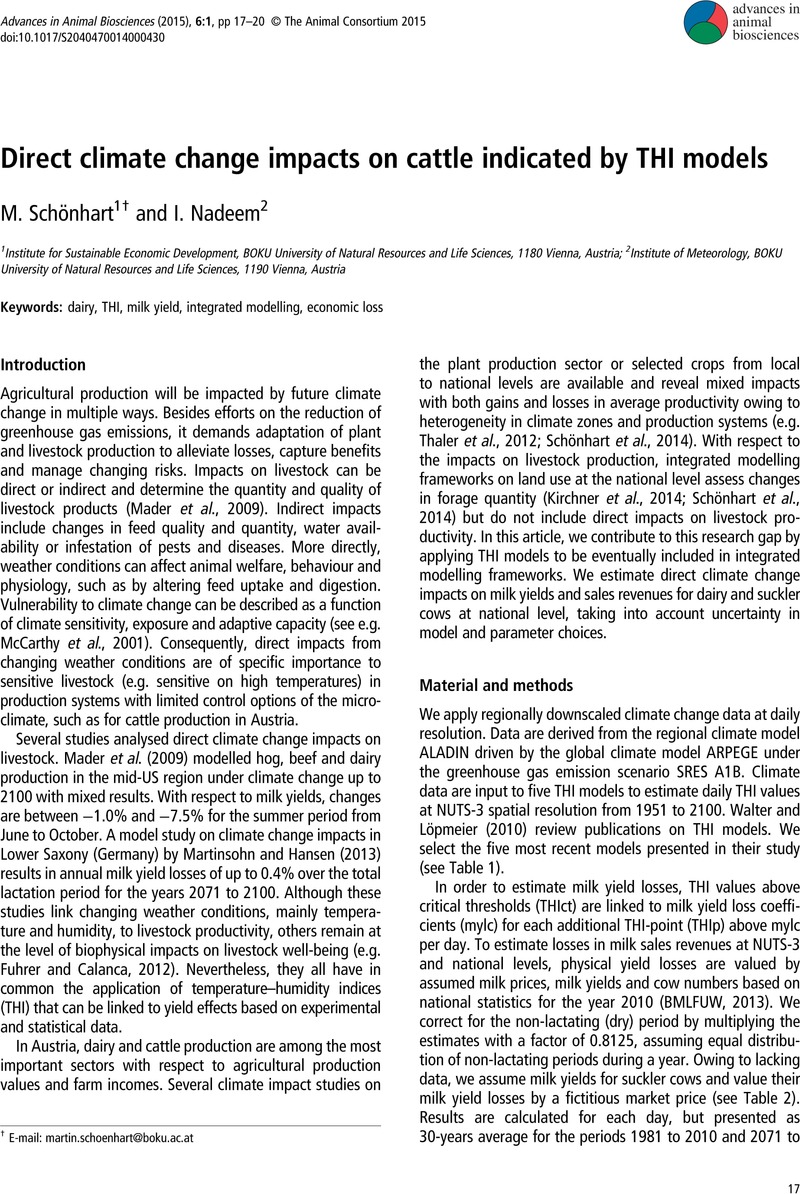Crossref Citations
This article has been cited by the following publications. This list is generated based on data provided by Crossref.
Schönhart, Martin
Schauppenlehner, Thomas
Kuttner, Michael
Kirchner, Mathias
and
Schmid, Erwin
2016.
Climate change impacts on farm production, landscape appearance, and the environment: Policy scenario results from an integrated field-farm-landscape model in Austria.
Agricultural Systems,
Vol. 145,
Issue. ,
p.
39.
Kipling, Richard P.
Bannink, André
Bellocchi, Gianni
Dalgaard, Tommy
Fox, Naomi J.
Hutchings, Nicholas J.
Kjeldsen, Chris
Lacetera, Nicola
Sinabell, Franz
Topp, Cairistiona F.E.
van Oijen, Marcel
Virkajärvi, Perttu
and
Scollan, Nigel D.
2016.
Modeling European ruminant production systems: Facing the challenges of climate change.
Agricultural Systems,
Vol. 147,
Issue. ,
p.
24.
Schönhart, M.
2016.
Heat stress impacts on cows in a case study landscape measured by an integrated modelling framework.
Advances in Animal Biosciences,
Vol. 7,
Issue. 3,
p.
235.
Lallo, Cicero H. O.
Cohen, Jane
Rankine, Dale
Taylor, Michael
Cambell, Jayaka
and
Stephenson, Tannecia
2018.
Characterizing heat stress on livestock using the temperature humidity index (THI)—prospects for a warmer Caribbean.
Regional Environmental Change,
Vol. 18,
Issue. 8,
p.
2329.
Gunn, Kpoti M.
Holly, Michael A.
Veith, Tamie L.
Buda, Anthony R.
Prasad, Rishi
Rotz, C. Alan
Soder, Kathy J.
Stoner, Anne M. K.
and
Loor, Juan J.
2019.
Projected heat stress challenges and abatement opportunities for U.S. milk production.
PLOS ONE,
Vol. 14,
Issue. 3,
p.
e0214665.



